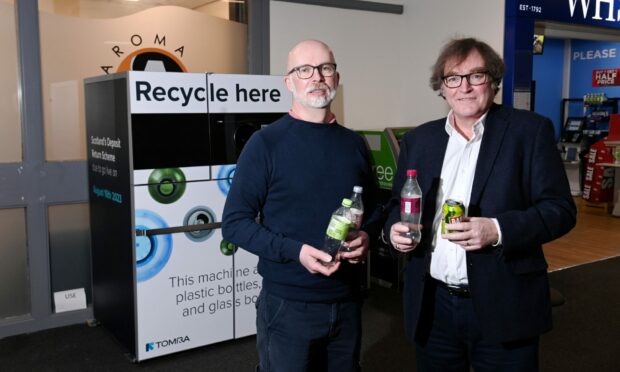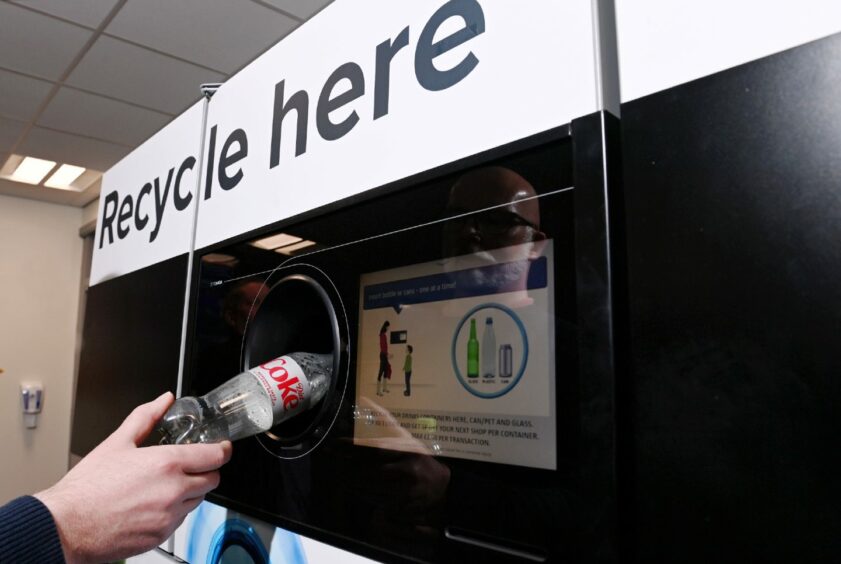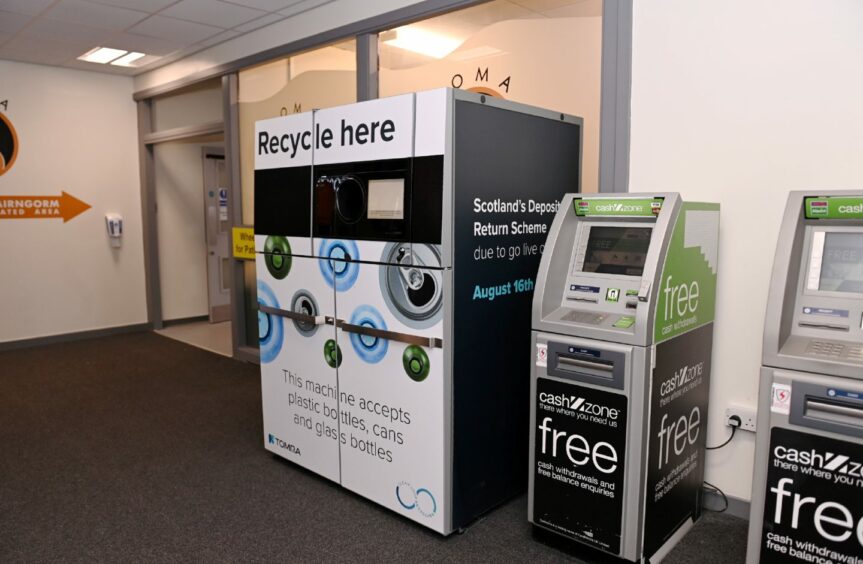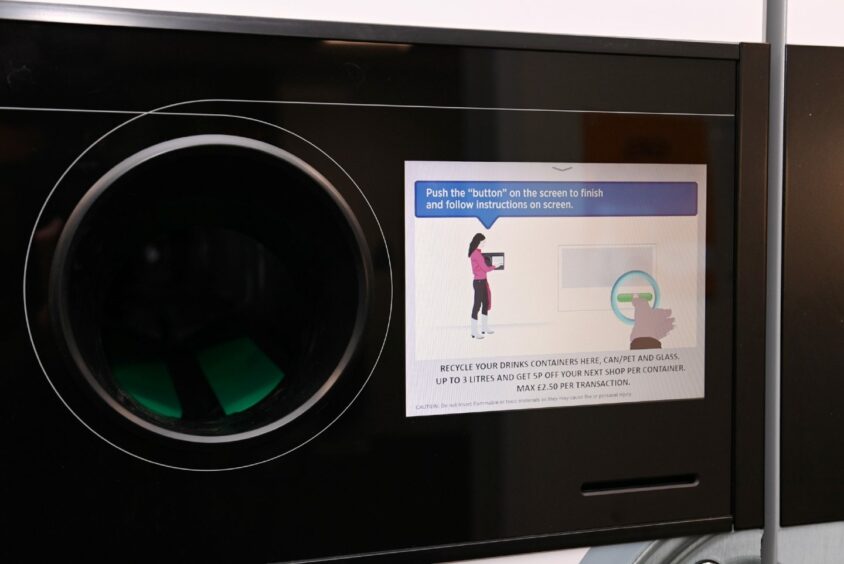The Scottish Government’s controversial deposit return scheme has launched a trial at Aberdeen Royal Infirmary.
It will be the first hospital in the UK to host a reverse vending machine (RVM) which will allow people to trade in their containers for money.
Beginning today, the trial is designed to highlight any issues before the long-delayed Scottish Deposit Return Scheme (DRS) is due to start on August 16.
Once it’s operational, nearly all bottles and cans made of metal, glass or plastic will require a 20p deposit that can be recovered only by returning them through an RVM.
Eventually, all buildings which include retail catering must either house an RVM or be part of a local recycling network.
What is a reverse vending machine?
An RVM is a device that processes cans, glass and plastic bottles.
For every eligible container you put into one, you will get the deposit money back.
However, they should not be crushed, as this will prevent the machine from sorting and crushing them.
All containers must be emptied of any liquids, and their lids must be kept on.
The RVM used in the trial has been provided by Norwegian firm Tomra, which has over 100,000 machines worldwide.
Four potential suppliers are currently being assessed to supply all of Scotland’s RVMs.
How will the trial work?
The trial will involve an RVM being placed next to the ATMs and WH Smith at the main entrance to Aberdeen Royal Infirmary.
For each container that is returned, a 5p voucher will be given which can be spent at the nearby Aroma Cairngorm cafe.
A daily limit of £2.50 will be allowed, which would involve bringing in 50 containers. Vouchers have to be used within two weeks of deposit.
Due to plastic milk bottles being made of a different material than most plastic, they will not be accepted.
Anyone can come and take part in the nationally funded scheme which will last two months.
However, once the full scheme is up and running in August, the deposit will be raised to 20p per item and cash will also be offered.
Trial will inform decision making
Derick Murray, a non-executive board member at NHS Grampian, said that despite the project just being “a little thing” he hopes it can have a big impact.
Neil Duncan is the waste management officer for NHS Grampian. He said he was “delighted” to see ARI leading the way in reducing litter and promoting recycling.
Mr Duncan says the trial will inform the team if RVMs should be installed or if the health board will set up a local recycling network at Woodend, Dr Gray’s Hospital, and Royal Cornhill Hospital.
The team will also be sharing their experience with the rest of Scotland’s health boards.
It will also be used to see how the public responds, and assess the popularity of cans, glass and plastic recycling.
Scheme steeped in controversy
As the DRS implementation date draws closer, it has continued to be controversial.
- In November, 508 industry leaders put their name to an open letter to Lorna Slater, who is Scottish Green Party co-leader and the government minister responsible for DRS.
- In January, some north and north-east business leaders hit out at the scheme saying it will end up “destroying” firms as prices could be raised and choice reduced.
- Last week, Inverness SNP rebel Fergus Ewing confronted Nicola Sturgeon on the plans, labelling them a “catastrophe” which will damage Scotland’s reputation as a place to do business.




Conversation